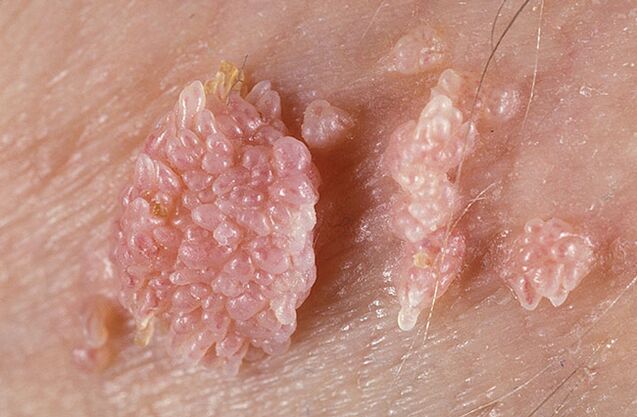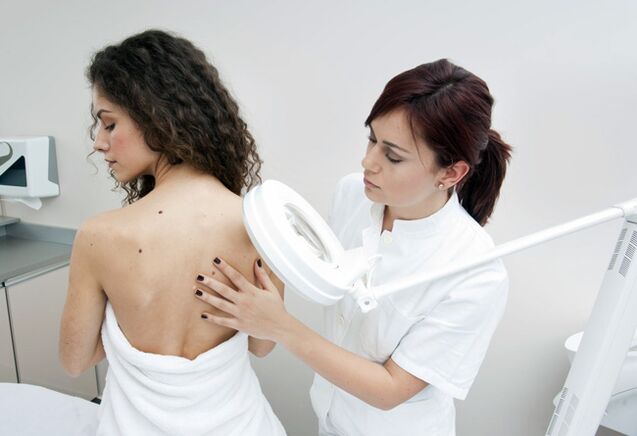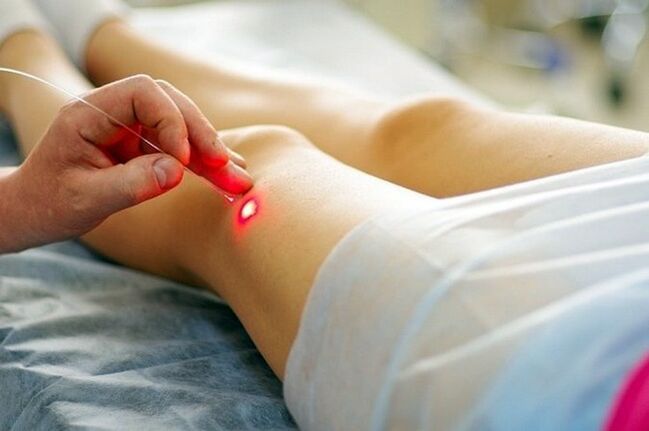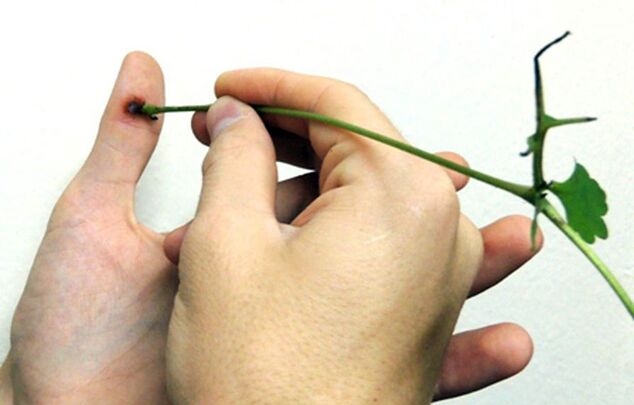Papilloma is classified as a benign neoplasm that has the appearance of warts that protrude on the skin. Such growths not only cause cosmetic discomfort, but in certain circumstances can cause harm to human health and even become malignant.

Why do papillomas appear and how to get rid of them without harming your own health?
What does a papilloma look like: types and types
Small benign formations (up to several millimeters in diameter) may appear on the skin and mucous membranes, which are popularly called "warts" and in medicine - papillomas. The growth is soft to the touch, has a slightly convex and slightly hanging shape, and the surface is heterogeneous and varies depending on the type of papilloma.
Where papillomas can occur:
- On the feet and hands;
- On the face and neck;
- On the mucous membrane of the genital organs;
- In the nasopharynx and oral cavity;
- In the armpit area;
- In the urethra.
Often, papillomas are localized and spread to the genitals.
Important! The main and only cause of papilloma is the human papillomavirus (HPV).
According to the level of risk to human health, papillomas are divided into two types:
- With a low level– papillomas caused by HPV types 6 and 11;
- With a high level– neoplasms that appear under the influence of HPV virus types 18, 31, 16, 35 and 33; the risk of developing dysplasia and cancer with such tumors is quite high.
Papilloma is a relatively common phenomenon, and it appears equally often in men and women. With a healthy immune system and a healthy lifestyle, the papilloma virus can "live" in the human body for years without detecting itself. But when the body weakens under the influence of certain factors, HPV begins to manifest itself externally - growths appear, redness and irritation may occur on the mucous membrane.
Important! Papilloma is not a malignant formation, but some types can create favorable conditions for the development of precancerous and cancerous conditions .
There are many types of papillomas, depending on the type of HPV that has entered the body.

What the main types of papilloma look like:
- Warts are flat– round or oval warts that rise above the skin by 1-2 mm. They are found in teenagers and young adults, which is why they are also called "juvenile warts. "
- Warts are simple ("gross")– rises about 2-3 mm above the skin and most often occurs on the feet, palms and hands, and is rough to the touch.
- Condyloma acuminata– looks like a chicken nest or cauliflower. Most often they are located on the mucous membrane - urethra, genitals, and in the mouth.
- Filiform warts– often this type is called "papillomas" and it is typical for people over 35-40 years old. They are most often localized in the armpits, on the face and neck, and under the breasts in women. The dimensions do not exceed 3-5 mm and look like round or thread-like growths.
Less common are papillomas in the urethra and bladder - usually in men and in combination with genital warts. A separate group includes papillomas in the larynx, trachea, and oral cavity, because such neoplasms cause many problems for patients and in some cases even pose a threat to life.
Why does papilloma occur?
The cause of papilloma in humans is HPV, which, penetrating into the blood, begins to multiply actively, mainly affecting the upper layer of the skin. With a strong and strong immunity, external manifestations of the virus may not be observed for a long time, but under favorable conditions, the growth of epithelial pathology begins.
Usually the incubation period does not exceed 2-3 months, but it happens that the latent course lasts for several years.

Factors that provoke the occurrence of papilloma are:
- Decreased immunity– under the influence of past infections, stress, long-term illness, vitamin deficiency.
- Bad habits– Smoking and alcohol abuse often cause tumor processes.
- promiscuity– papillomas are often sexually transmitted, and concomitant diseases of the reproductive system only increase the development of HPV.
An indirect cause of the development of HPV can be long-term treatment with antibacterial drugs for viral and infectious diseases, and gastrointestinal pathologies.
Important! HPV infection occurs through sexual contact in 50% of cases. Therefore, doctors consider any sexually active person to be at risk.
Papilloma often occurs in adolescence and young adulthood, which coincides with the onset of sexual activity. Young people are more likely to have unprotected sex and change sexual partners. In this case, HPV can enter the body through the vagina, mouth and anus.
In women, factors that provoke the appearance of papillomas are: general weakness of the immune system (with long-term illness, frequent stress), use of oral contraceptives, and menstrual irregularities.
In men, papillomas occur as a result of promiscuous and active sexual life, refusal of condoms, nicotine and alcohol addiction.
How you can get infected:
- sexually- the most common route of infection. Using a condom does not eliminate the risk of infection, especially if the tumor is localized in the perineum or anus.
- During pregnancy and childbirth– if the mother is infected with the HPV virus, it will be transferred to the child during childbirth or through breast milk.
- In a daily way– when using general hygiene products, violating hygiene standards.
Self-infection with the papilloma virus often occurs in places with high humidity - on the beach, in swimming pools, saunas. With small damage to the skin or when the mucous membrane comes into contact with the source of HPV, infection occurs.
Penetrating into the body, the virus looks for the most suitable habitat for itself, but is more often localized in the part of the body that most often experiences microtrauma. The virus becomes contagious immediately after entering the human body. HPV does not spread to other organs, but it is quite difficult to get rid of it and it is almost impossible to completely eliminate the virus.
How to get rid of papillomas
Usually, papillomas do not require treatment if they do not cause cosmetic discomfort and are not subject to persistent injury. Some rashes may disappear completely on their own when a person's immune system improves, but with any provoking factor it reappears.
It is necessary to treat papillomas only in the case of large growths and in the presence of risk factors for their degeneration into malignant tumors.

Treatment at home is best done after consulting a doctor - often, papilloma removal is handled by a dermatologist; if the tumor is located in the genital area, a dermatovenerologist (for men), a gynecologist (for women).
Important! Under no circumstances should you cut, scratch, or squeeze the tumor yourself!
Therapy for papilloma is carried out comprehensively - first, drugs that increase immunity and antiviral agents are prescribed. Usually this is enough for the tumor to disappear on its own.
But if the papilloma interferes with a person's normal life or the doctor believes that the virus poses a danger to the patient's health and life, surgical removal of the papilloma is suggested.
Notes! It is impossible to get rid of the papilloma virus completely, but you can remove the papilloma at home or in the clinic, thereby preventing the dangerous development of this disease.
An infected person needs to take preventive measures to prevent the appearance of tumors, adhere to a healthy lifestyle and improve immunity.
Treatment at the clinic
Treatment at the clinic involves the removal of papillomas by surgical methods, and the removal method is chosen by the doctor based on the type of tumor and after the diagnostic procedure.
It is usually recommended to remove the growth if the diameter of the tumor is more than 1 cm or if cancer is suspected. During the operation, the tumor and some surrounding tissue are removed, after which cosmetic sutures are applied.

Surgical method to remove papilloma:
- Laser removal.The most accessible and common method consists of removing the growth with a laser after anesthesia with anesthetic. This procedure takes about 20-30 seconds per tumor. After cauterization, a crust remains on the skin that cannot be removed - after a few days it will fall off by itself. In this way, it is suggested to remove papillomas on the neck, face, armpits, under the mammary glands, where the skin is very delicate and easily injured.
- Radiosurgical treatment.According to the principle of implementation, this method is similar to laser cutting, but its distinct advantage is that radio wave therapy is not so dangerous for human eyes, and therefore it is better when removing papillomas on the eyelids and face.
- Cryodestruction– cold cauterization using cotton wool soaked in liquid nitrogen (liquid nitrogen has a temperature of minus 15 degrees). The frozen growth falls off on its own after a few days. This procedure does not require anesthesia, but it is not recommended to be done on the face, because liquid nitrogen treatment can cause temporary redness of the skin.
- Electrocoagulation– an outdated method using an electric knife that burns the tumor using a high frequency current.
- Excision with a scalpel– the previously common method of removing papillomas, is now not used in almost any clinic because of the high risk of skin trauma.
The excised growth is sent for histology to exclude the presence of malignant cells.
Treatment does not end after the operation - the doctor prescribes immunomodulatory and antiviral drugs to the patient, and gives recommendations to carry out medical procedures at home.
To improve immunity, it is recommended to take vitamin complexes, immunomodulators, diet, walking in the fresh air, and hardening.
After surgical removal, relapse usually does not occur; Re-emergence of growths at the incision site may occur if the area is not completely cleaned.
Treatment at home
Some types of papilloma can be eliminated at home using folk remedies and pharmacies.
Papilloma removal at home can be done using pharmaceutical products that have cauterizing properties.
These drugs are alkaline and acid compounds, that is, they eliminate papillomas by burning the tissue on the skin. Therefore, before burning papillomas at home, it is advisable to consult a doctor and use the product carefully so as not to harm the skin, especially if the tumor is located on the face or neck.
Removing papillomas at home should be done in compliance with three basic rules:
- You cannot remove genital warts on your own genitals.
- It is impossible to remove an unknown growth with signs of bleeding, inflammation, or excessive growth.
- You can not remove a tumor on the face - scars or scars may remain, which the doctor will not be able to remove later.
How to get rid of papilloma at home:
- Garlic.Cut a piece of garlic and apply the fresh juice to the growth, securing it with an adhesive plaster. Repeat twice a day for 2-4 weeks.
- Celandine juice.Make a cut from the stem of celandine and apply the place where the juice is released to the new growth. You can do the procedure 2-3 times a day, from 14 to 30 days. This method allows you to quickly and painlessly remove papillomas on the face at home.
- Soap.Lather the skin several times a day on the affected area. Treatment is ineffective for old and multiple tumors.
- Castor oil.The area around the papilloma is lubricated 1-2 times a day for 1-1. 5 months.
- Vinegar.You can mix 70% vinegar and glycerin in equal proportions and spread it on the growth three or four times a day. Or use ordinary 5% vinegar to lubricate the papilloma every day.
You can remove papillomas on the eyelids at home using Kalanchoe or aloe juice, while at the same time using antiviral eye drops. But if the growth is located close to the mucous membrane of the eye and inside the eyelid, it is better not to do treatment at home, you need to consult an ophthalmologist or a dermatologist.

The most gentle method to remove armpit papilloma at home is to use an ordinary egg white: the white is applied to the papilloma in a thick layer and left in this state for several hours, after which another layer is applied on top. In a few days of daily repetition of the procedure, small papillomas dry and fall off by themselves.
Traditional medicine offers many ways to get rid of papillomas at home, but it should be remembered that different methods will be effective for different types and types of growth, so each method is purely individual, and it is advised to use it after consultation. with a doctor.
Important! Various supplements for papilloma, monastery tea, tea for parasites and papilloma - do not help in the treatment of papilloma!
It is almost impossible to avoid HPV infection - even with strict adherence to the rules of personal hygiene, avoiding casual sex and visiting places of public use, there is no guarantee that the virus will not enter the body through contact with household items that have previously been touched by peoplewhich has been infected.
Therefore, the main preventive measures for the occurrence of papillomas can only be considered to improve immunity, maintain a healthy lifestyle, avoid stress and infectious diseases, take vitamins and get rid of bad habits.















